Mass compression
“Shymflation” was not invented now and not in Russia, the American economist Pippa Malmgren writes in her book “Signals: the Collapse of the Social Contract and the Rise of the Influence of Geopolitics” that in the United States in the 1970s, the reduction in packaging of goods preceded the establishment of ordinary inflation. After the crisis of 2008-2009, this method again attracted attention. The American press wrote about the reduction of cans of cola (for example, Coca-Cola introduced new small cans and launched an advertising campaign), pasta, sauces, biscuits, canned vegetables and fish. In Britain in the same years, food packaging decreased even more drastically. For example, Toblerone and After Eights chocolates in 2010 “ lost weight ” immediately by 30 g (15%) from the original 200-gram bar and box. In 2016, Toblerone dropped even further to 150g. This caused a heated discussion on social networks, and the company even had to make excuses and admit that the reduction in packaging was caused by savings.
In Russia, packages also began to decrease after the 2008 crisis. According to GfK Rus analysts, from 2012 to 2018, manufacturers of daily consumer goods reduced the size of their packages by 7-20%, depending on the category. In 2019, VTsIOM conducted a survey , according to the results of which it turned out that almost three-quarters of Russians noticed the reduction in packages, and 60% admitted that they were negative about this.
At the same time, the largest producer of dairy products in Russia, Danone, admitted that steel producers were reducing packaging after the 2008 crisis in order to avoid a sharp increase in prices. At the same time, the then vice president of the company in Russia and the CIS, Marina Balabanova, noted that the difference of 30-50 ml is not significant for the consumer. Sweets maker Mondelez (brands Oreo, Alpen Gold, Milka) said it is reducing packaging due to the trend towards healthy eating.
In contrast to other countries, in Russia, the reduction in packages of goods does not affect the government's estimate of inflation. Rosstat uses a methodology in which the prices of goods are compared in terms of kilograms, liters, or, for some goods, by packaging of a standard (according to the agency) size. For example, toilet soap is accounted for in terms of 100 g, shampoo – for a package of 250 ml, canned meat and fish – for 350 g. liter has grown.
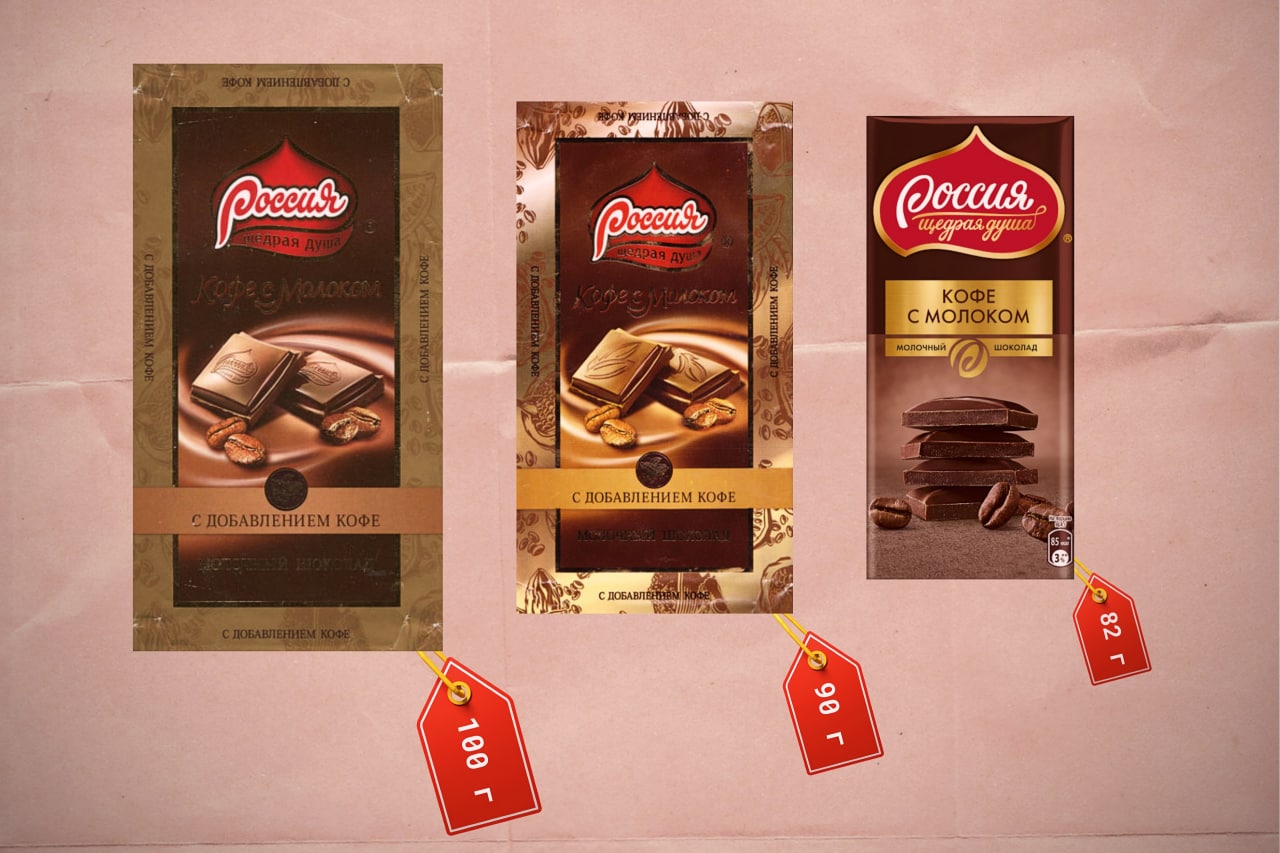
According to Rosstat, by September, food inflation since the beginning of 2022 amounted to almost 9%. However, some products have risen in price much more. As in the past year, the sharp rise in prices primarily affected cheap goods that most Russians consume. As The Insider calculated, compared to August 2021, the price of margarine and sugar has increased by one and a half times – this is the most significant rise in prices among food products. Rice, frozen squid (a cheap source of protein) and biscuits went up by 36-38%, buckwheat – by 30%, salt – by 32%.
On average in Russia, a kilogram of ordinary rice now costs 115 rubles, buckwheat – 134 rubles, Rosstat reports. However, there are almost no such packages in stores. The Insider analyzed the catalogs of popular retail chains for 2020-2022 and found out that cereals are most often packaged in packages of 400, 500, 800 and 900 g. Over the past 2 years, intermediate options have also appeared – 450 and even 410 g, 300 and 10–40 g less, 700 and 50–100 g less. This is how shrinkflation works: packs of goods lose weight imperceptibly, by a few percent at a time.

For example, Makfa brand pasta appeared in packs of 400 g. Although earlier a pack of 450 g was typical. Even buyers of goods on the Ozon marketplace noticed this.


It milks hard, but the milk is liquid: how the container of dairy products has decreased
The gradual decrease in the amount of product in the package is especially noticeable on dairy products. They continue to be bottled in jars and bottles of the same volume. A buyer who does not look closely at the labeling may simply not notice that every few months there is less milk or kefir in the bottle. After analyzing the catalogs of Russian retail chains, The Insider found that the popular brand Activia yogurt "lost" a few tens of grams over the past few years. In the spring of 2022, the manufacturer even began to introduce smaller packages of yogurt in a new design and marked “Favorable price”.


The volumes of other Danone products are also decreasing. Sour cream "Prostokvashino" in 2022 is packaged in glasses of 300 g, although back in 2020-2021 the mass of sour cream in the same package was 315 g, and five years ago – 350 g.
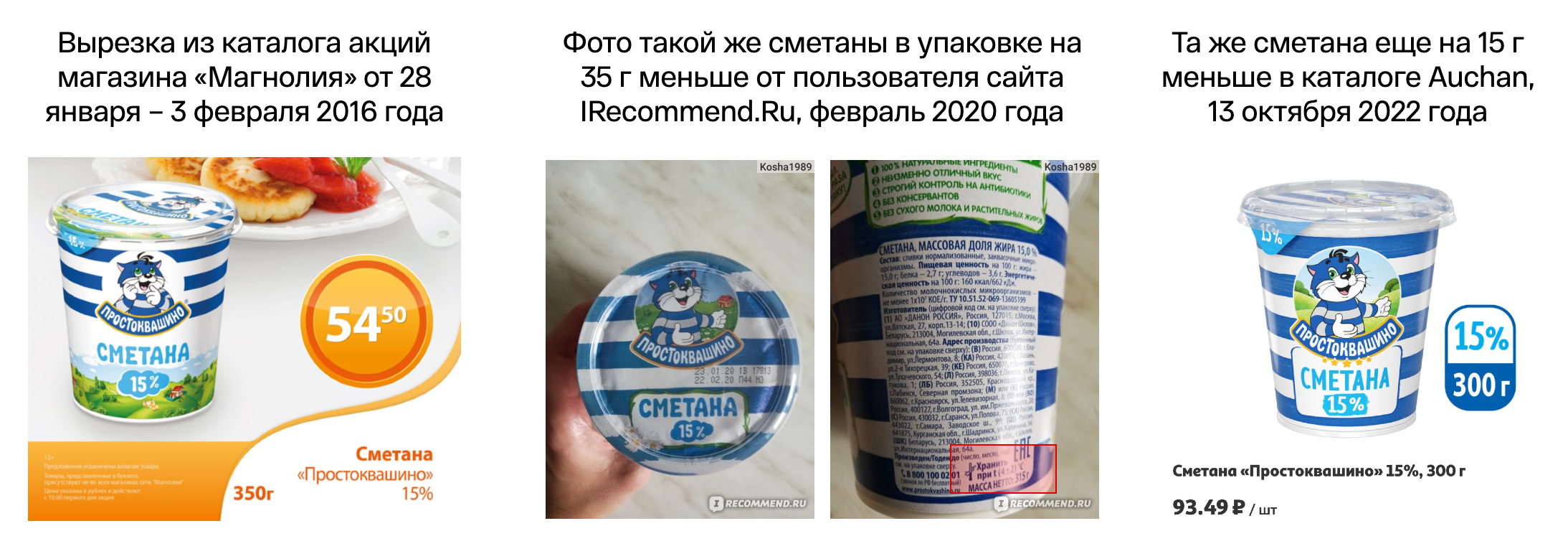
However, buyers of products claim that in 2022 the manufacturer stopped guaranteeing even these 300 grams. The Insider found photographic evidence among reviews on Ozon that there is much less sour cream in the package.
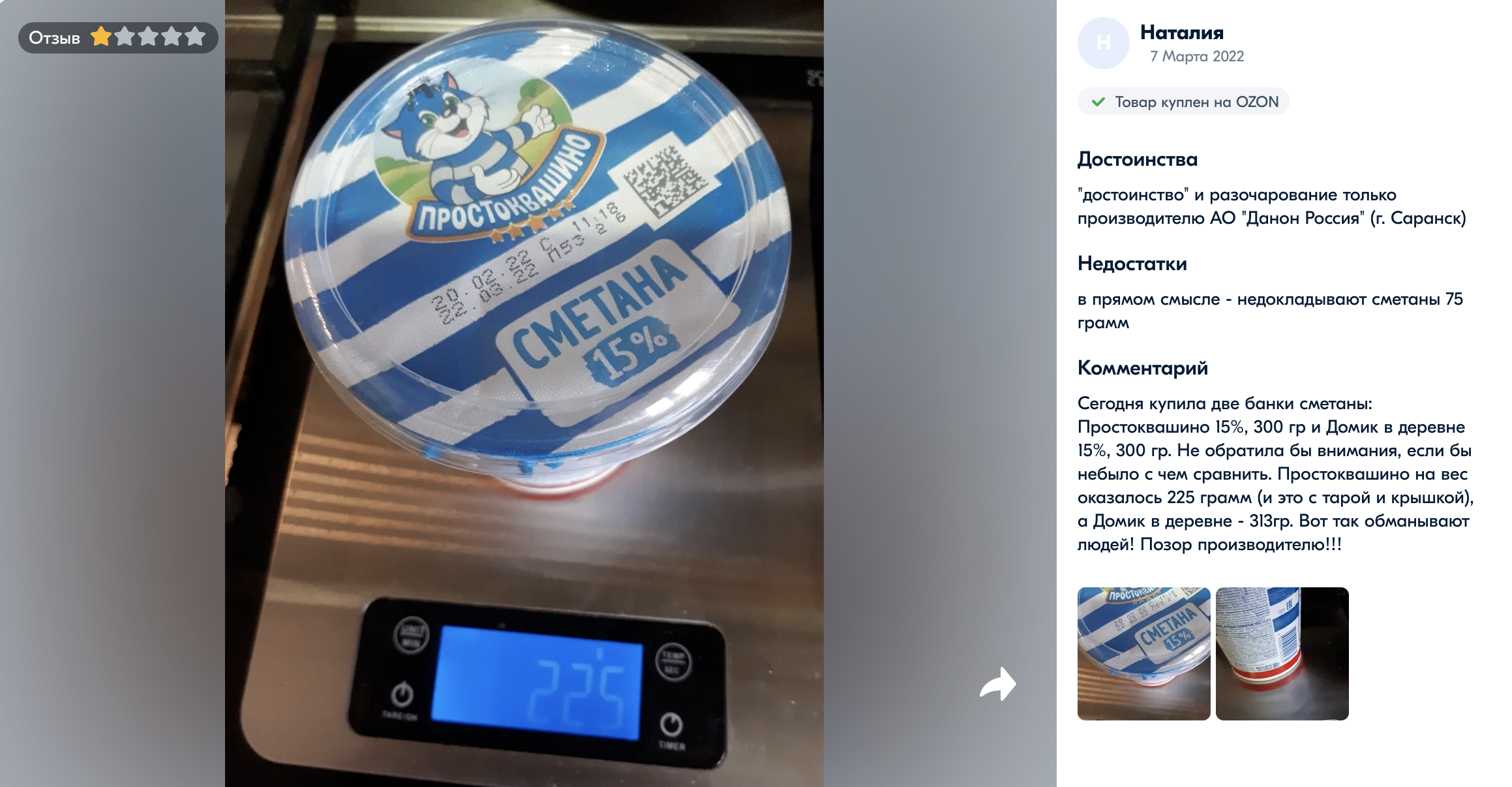
A similar fate befell the packaging of the cottage cheese of this brand.
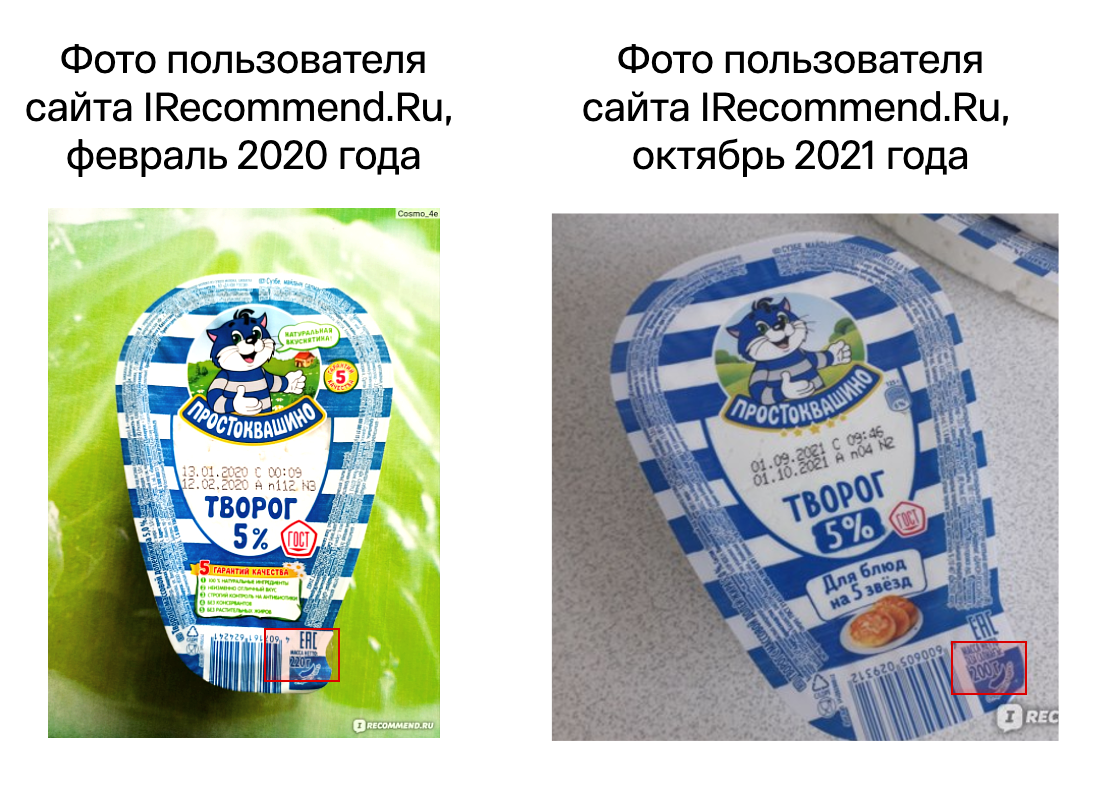
Danone is not the only dairy company to use this approach. The Molvest company (Vkusnoteevo brand) also “compresses” the packaging. For example, fat-free cottage cheese “lost” 50 grams (14%) in five years and rose in price by about 40%.
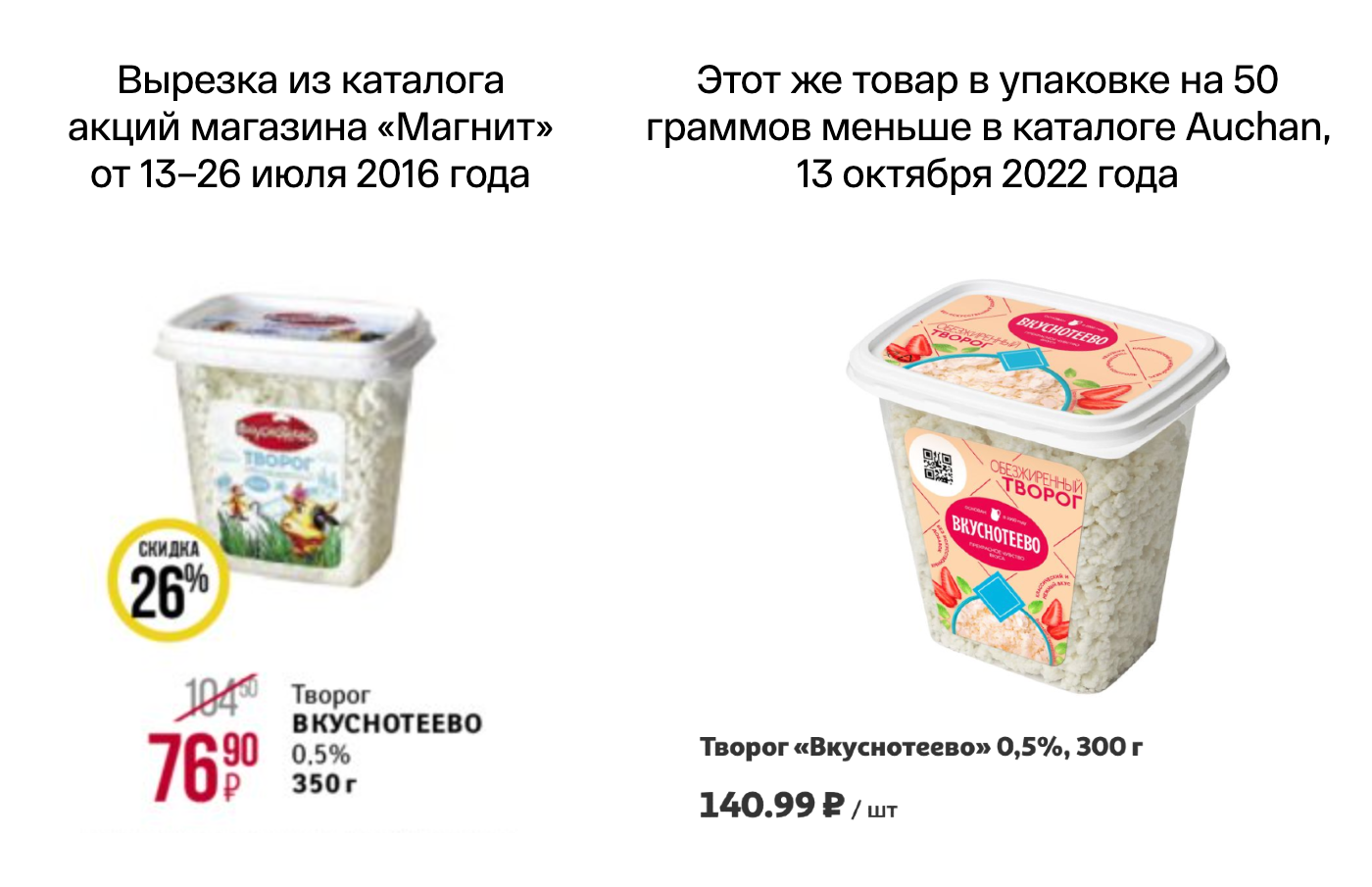
Fruttis yogurt has decreased by five grams and even almost retained the old price – the manufacturer managed to do this due to changes in the composition. This happened just a few months ago, so not all retailers had time to change the labeling on the sites.
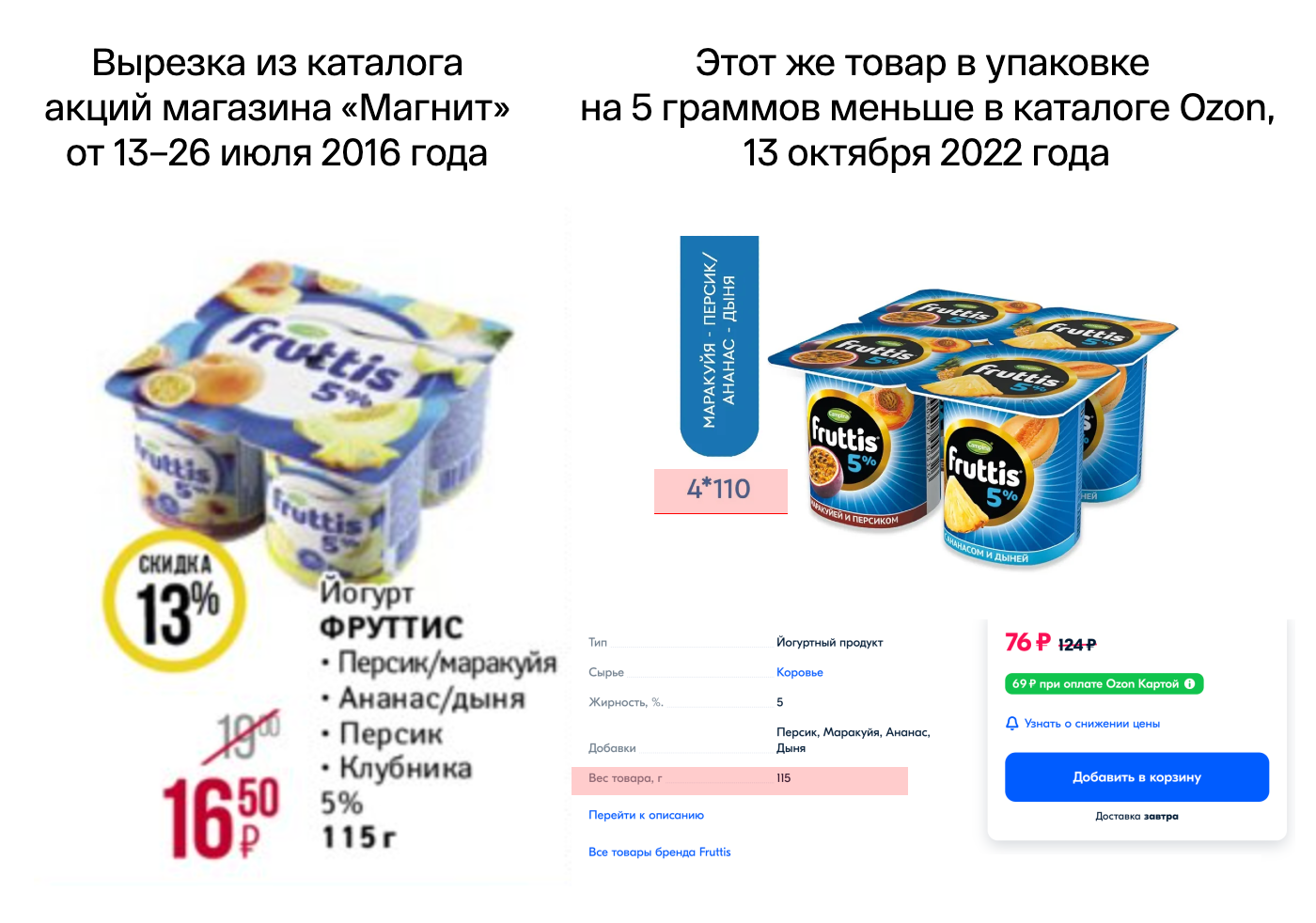
The most common packaging for pieces of hard cheese is 250 and 400 grams, different manufacturers have variations, for example, 370–380 grams, or 270–280 grams (that is, a little less than 300), 220–230 grams (a little less than 250). Moreover, one manufacturer may have types of the product in one or the other package. For the buyer, this difference is not very noticeable.
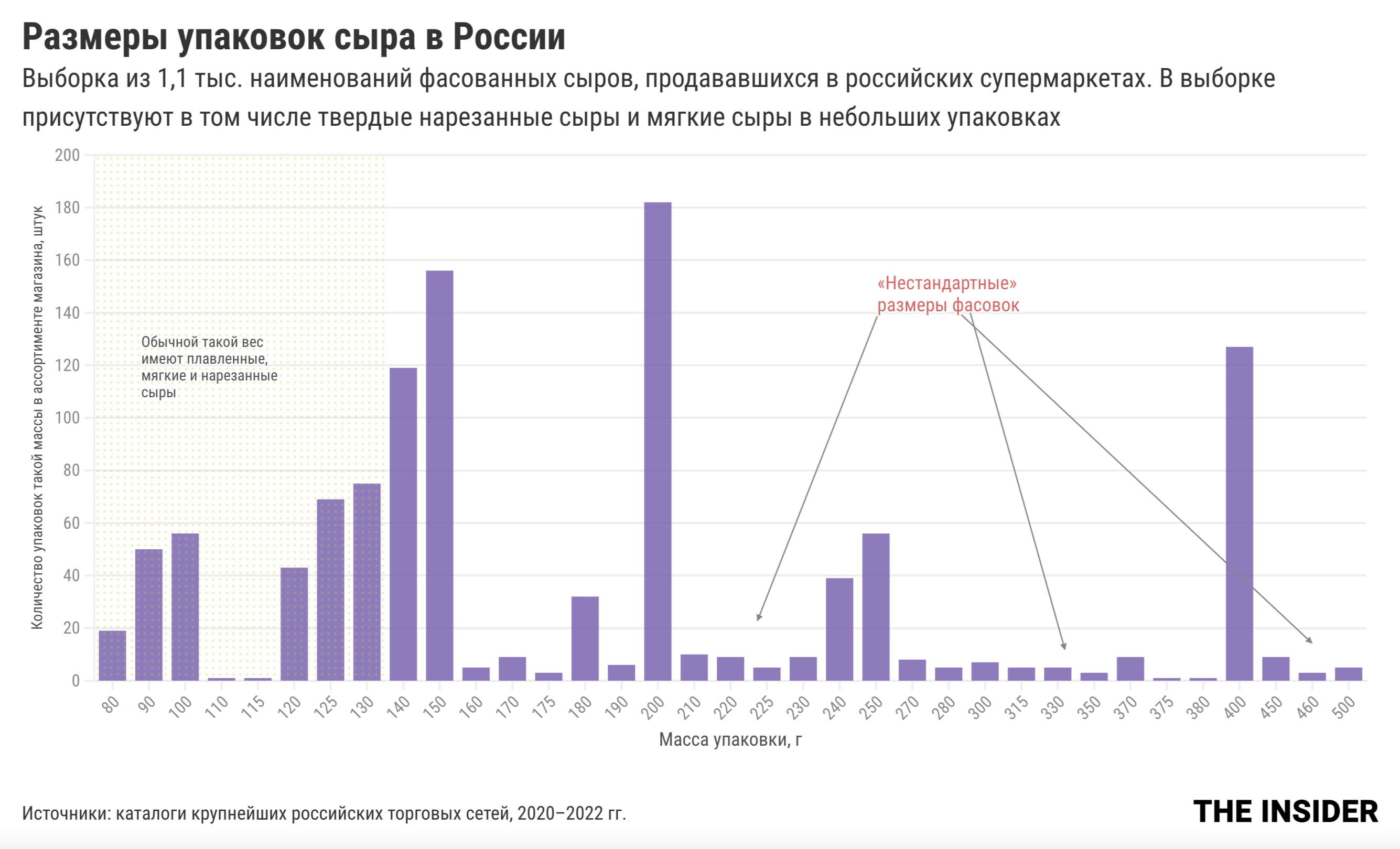
The Belarusian producers did not neglect the “compression” either: in six years, the packaging of products under the Brest-Litovsk brand (manufactured by JSC Savushkin Product) decreased by 5–10%.
Russia is a generous soul: how chocolate melted
In exactly the same way, you can investigate how chocolate packages melt – if once a typical bar weighed 100 grams, now you will have to look for such a chocolate bar in Russia, and there are mainly imported brands: Lindt, Toblerone, Ritter Sport, Kinder. Of the chocolate produced in Russia, the products of the United Confectioners holding retained the usual mass of the bar: the Soviet brands Alenka, Babaevsky, Inspiration.

But the tiles under the brand "Russia – a generous soul!" (owned by Nestle) melted not in the mouth and not even in the hands. For ten years, only 82 g of a 100-gram bar remained, while the composition of chocolate deteriorated significantly.
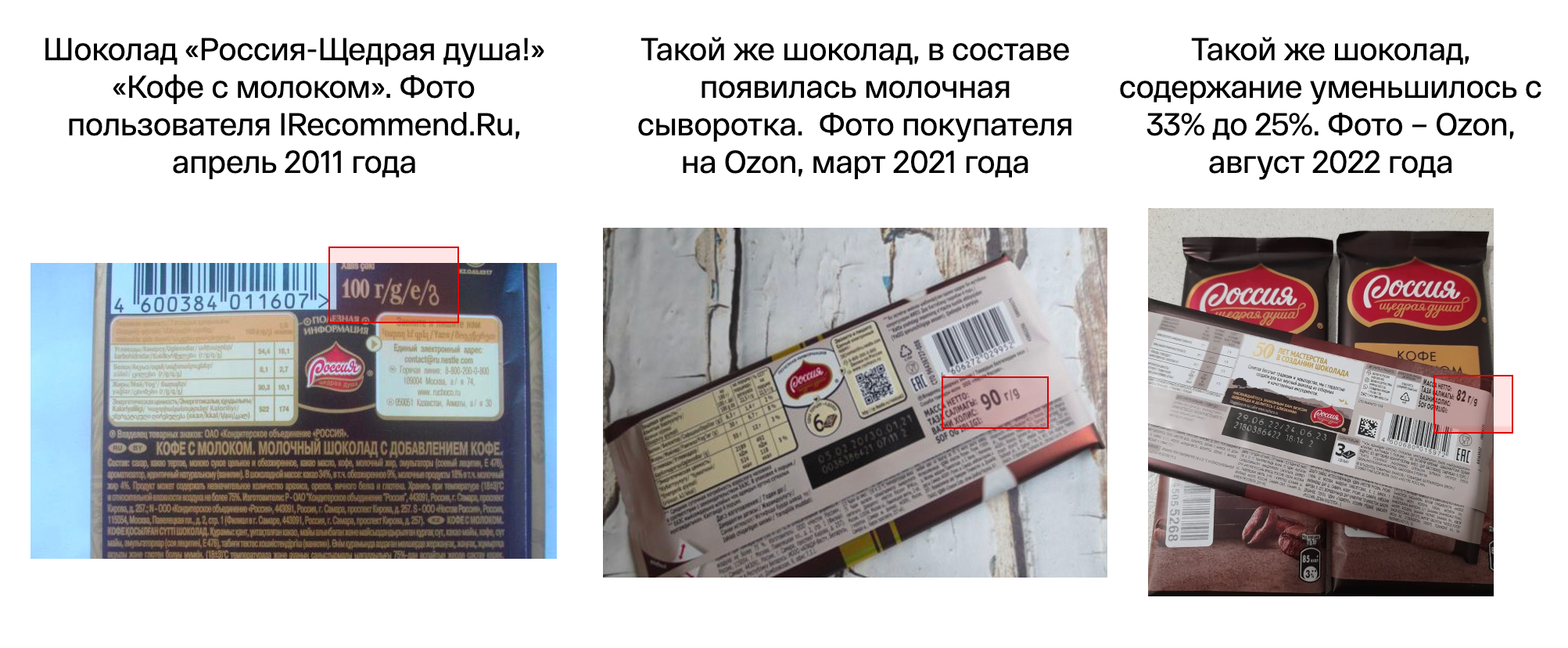
The same fate befell the brand of chocolate, which can be bought in any country in Europe and in the USA – Milka. Back in March 2022, a bar of classic milk chocolate produced under a brand in Russia (Mon'delis Rus) weighed 90 g, but by October it began to weigh already 85 g. Although the manufacturer claims that the matter is in the trend for healthy eating, The Insider found out that only the Russian subsidiary of Milka weighs that much. For comparison, in October 2022, the weight of a similar chocolate bar in other countries is 100 g.
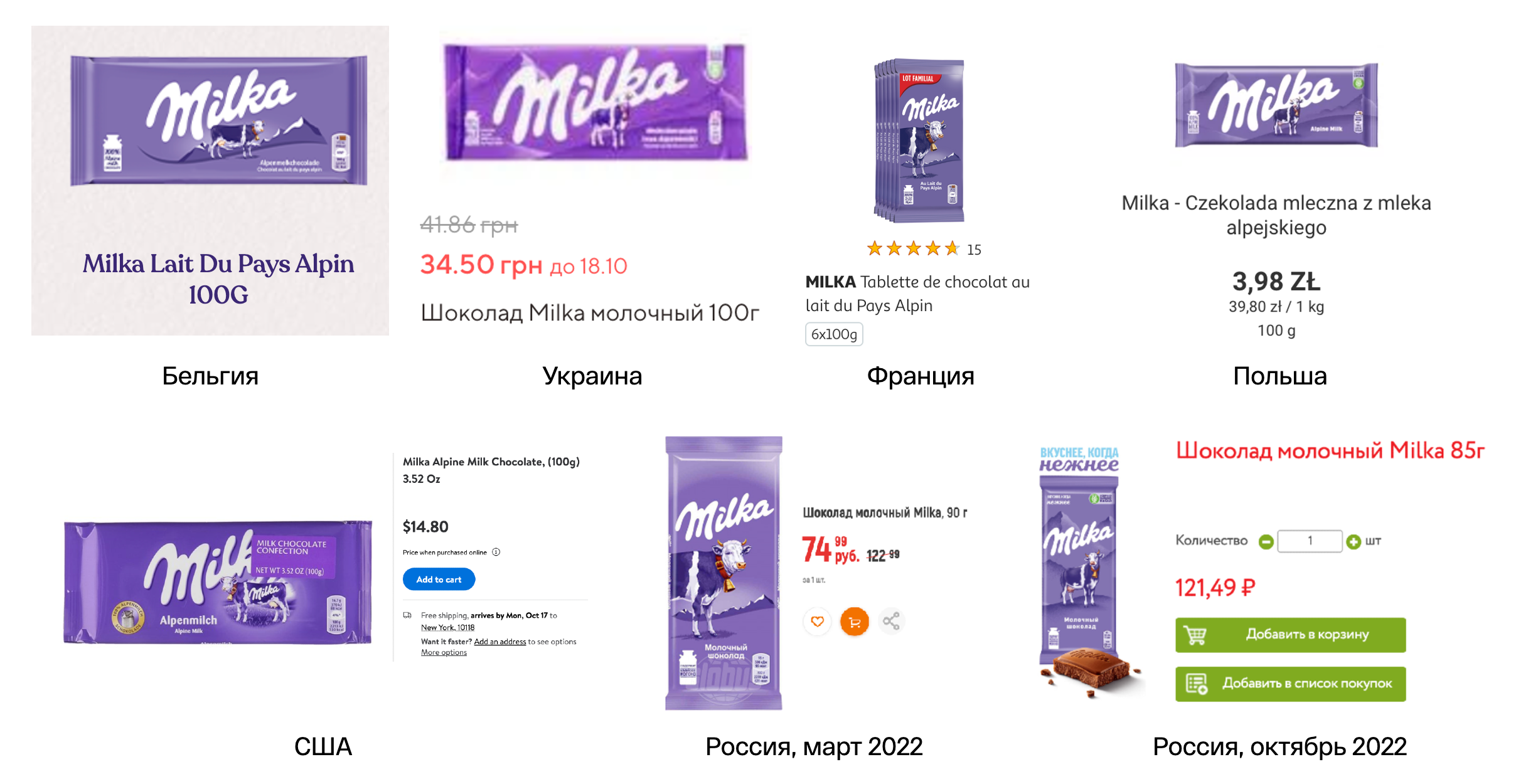
However, another popular brand of the same manufacturer (the Russian "daughter" of Mondelez) – Alpen Gold – indeed in different countries it is produced in packaging of less than 100 g, as in Russia.
Brewed to last: how the beer evaporated
Even bottles of beer are empty before our eyes. The once "standard" half-liter bottle has long since become a 450 ml bottle. However, from the middle of 2021, bottles of 440 and even 430 ml began to appear. For example, a bottle of Bud Light beer from 2021 to 2022 lost 30 ml, and now it has 440 ml. The light beer Stella Artois now has the same volume, although a year ago it had “honest” half a liter.
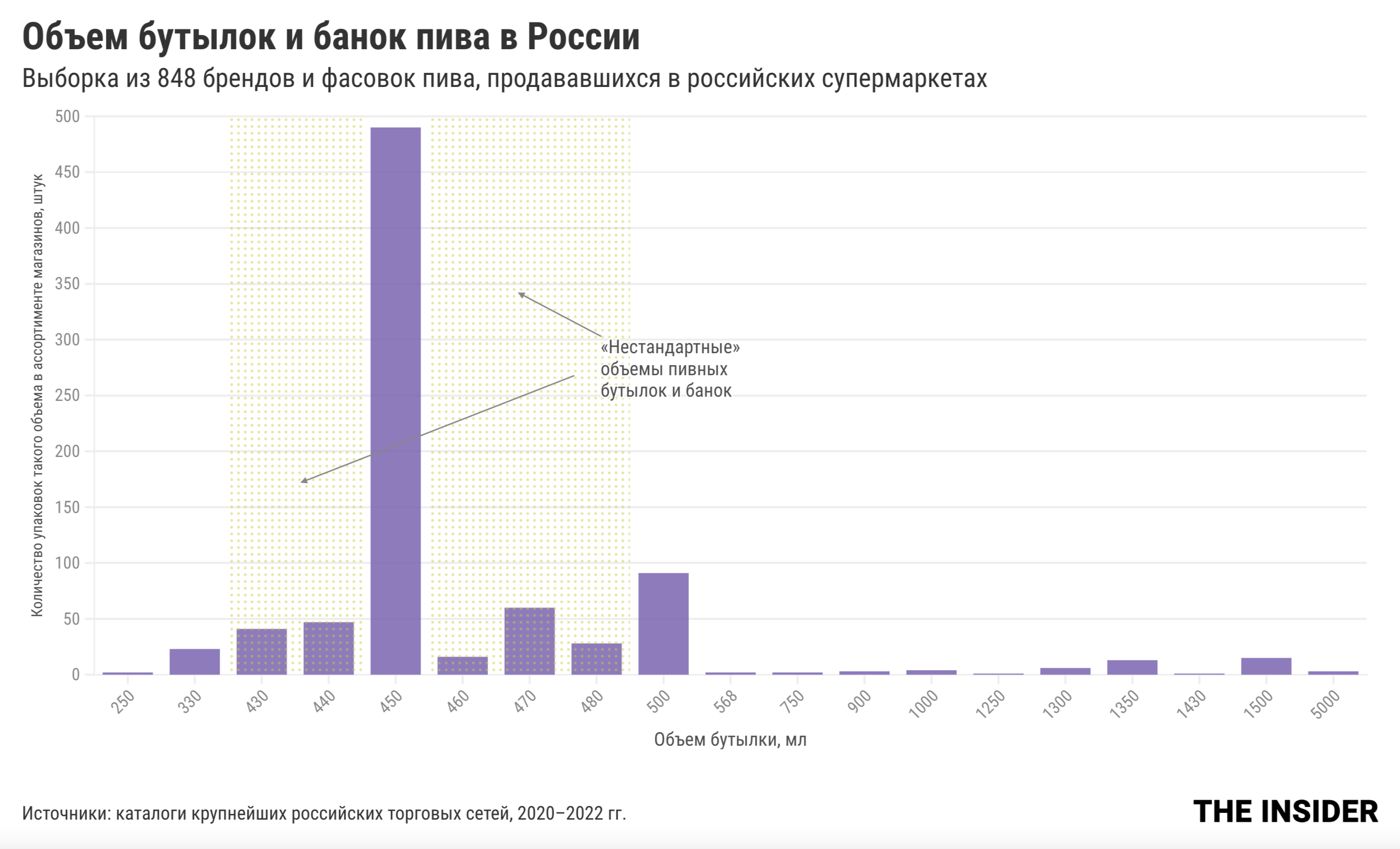
Changes in the volume of such popular brands in Russia as Staropramen, Velkopopovický Kozel, Gambrinus did not succeed – they simply cannot be bought. In March, due to Russian aggression against Ukraine, many Czech brands stopped deliveries to Russia. Imported beer from the UK, USA, Belgium, the Czech Republic and Germany has almost ceased to be imported. In October, the Association of Retail Trade Companies (AKORT) noted a 40% reduction in the range of imported beer. The government is already considering allowing parallel imports of alcohol, as Russians prefer imported brands, and their absence on the shelves hurts the income of retail chains.
Measurement errors
Studying catalogs of goods and their historical packaging, The Insider found many examples when between popular, more “standard” packaging options (for example, a liter of milk or butter, a kilogram of rice or flour, half a liter of beer or a hundred grams of chocolate) there are reduced, uneven values. They do not appear, for example, in packages of wine, pasta, water, baby food, candy or cat and dog food, but are very common in boxes, cups and bottles of dairy products, packs of cereals, sauces, chocolate and canned food.

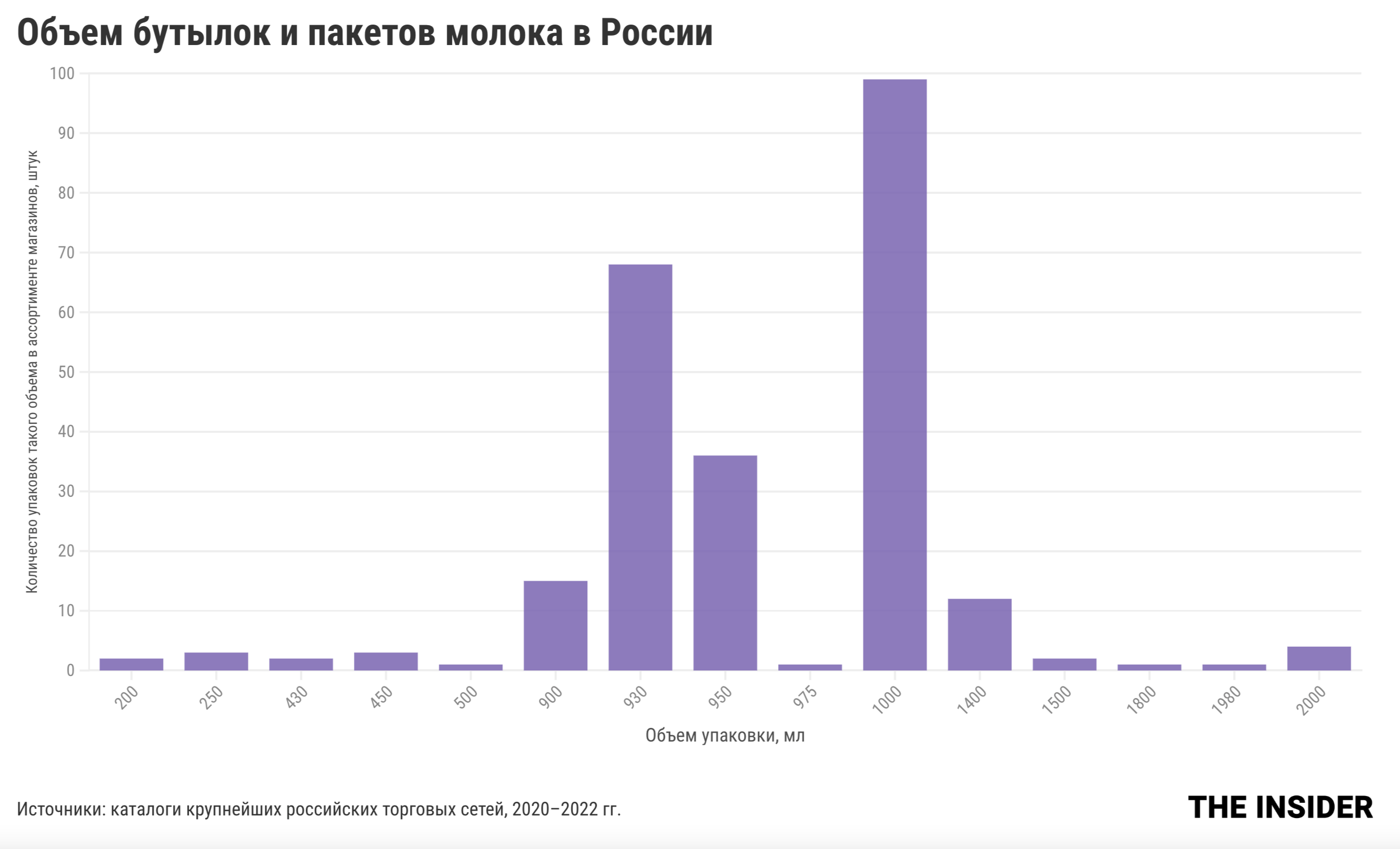
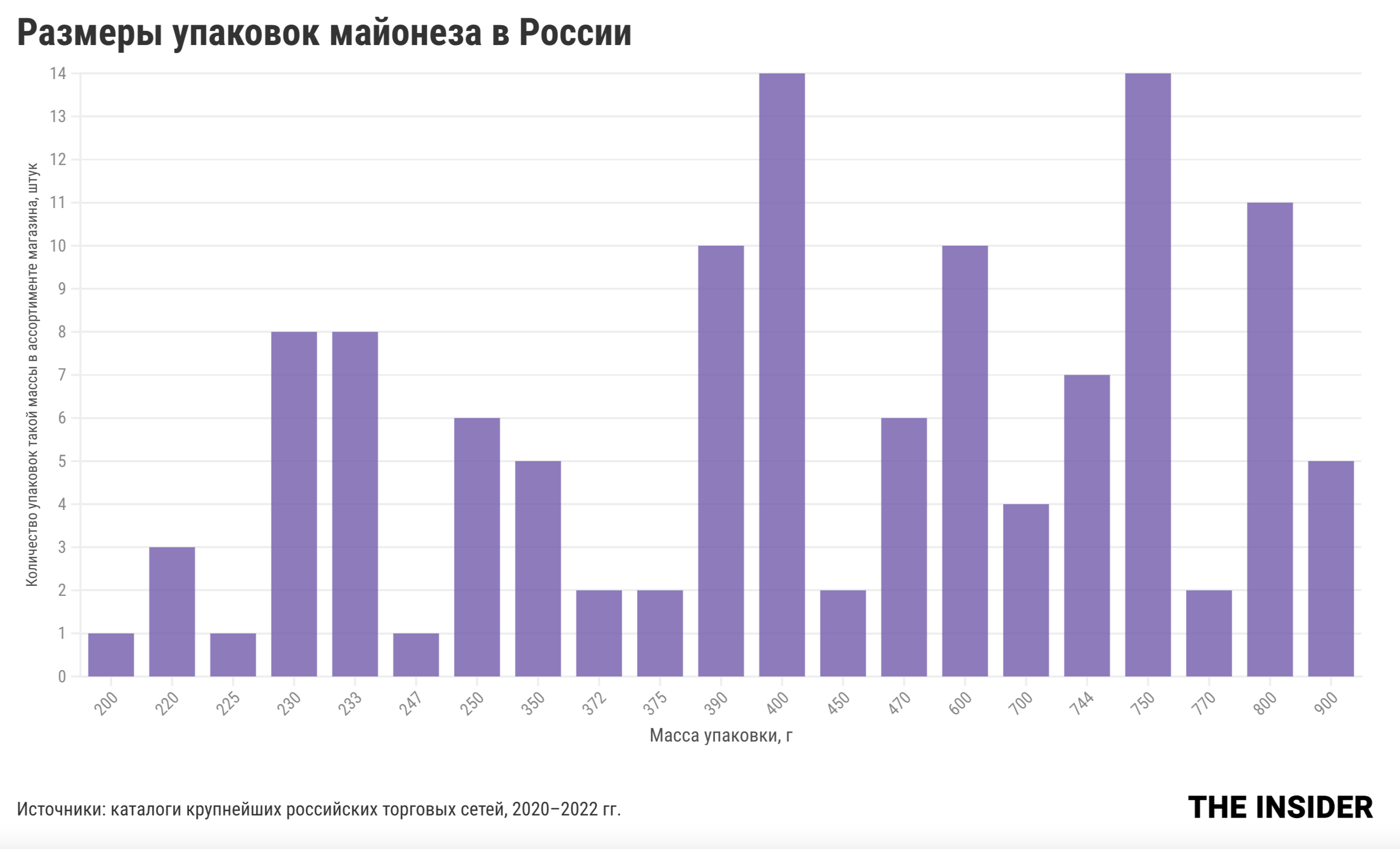
Packaging variations are often found in international food holdings producing goods for Russia, and less often in Russian companies or among imported products.
It is obvious that the policy of "simpflation" cannot be pursued indefinitely. Consumers may not notice a reduction in a pack of milk from a liter to 900 ml (especially if it is about the same in size, there is just less milk), but it will no longer be possible to confuse a liter and half a liter. Now manufacturers have already reached the limit of their ability to "compress" packages, which means that there are no other tools left – they will have to raise prices.
Did you like our content?


